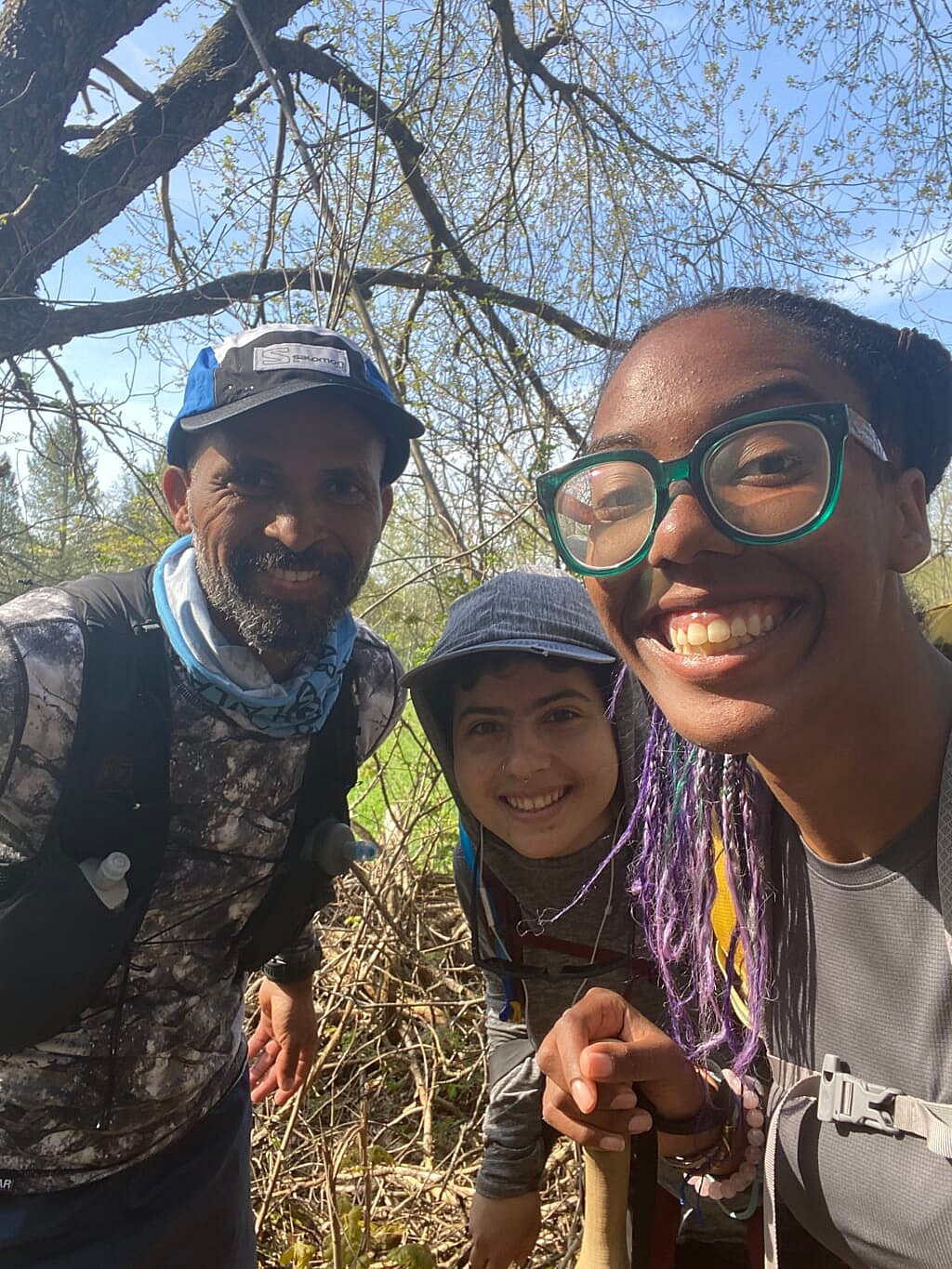After five weeks on a Canadian trail with Underground Railroad ties, Zwena Gray has come home with a better appreciation of history and herself.
Gray, according to several media reports, became the first Black woman in modern time to thru-hike the Bruce Trail, meaning she walked the trail from one end to another without long breaks off the path. She started the hike on the oldest and longest continuously marked hiking trail in Canada on April 23 and finished five weeks later, on June 3.
“I love to be outdoors and engage with nature,” Gray told theGrio. “I think there’s so much liberation and learning that comes from being outdoors, like leadership and adventure. So that was the first drive for me to do this.” She said she also wanted to connect with people who hadn’t hiked before and learn about the trail’s history.

The trail holds historical significance because it coincides with the Underground Railroad, with settlements located throughout Ontario. The trail starts in Queenston, Ontario, not far from Niagara Falls, and ends in Tobermory, a small harbor village at the northern tip of the Bruce Peninsula.
Gray said she talked to two historians along her journey who “were descendants of people who came to Canada via the Underground Railroad. It was really personal, and people talked about their own family history and the importance of storytelling. Being able to receive that history from people with such a personal connection was really impactful.”
In St. Catharines, Ontario, Gray visited the Salem Chapel British Methodist Episcopal Church, which its website says is the oldest Black church in Ontario and included Harriet Tubman as a member.
She described her time on the trail as a combination of beauty and heartbreak. She marveled at the natural wonders, like water so clear you could see 30 feet down.
But she also had to stop hiking when she heard about the May 14 shooting at a supermarket in Buffalo, New York, that left 10 dead in what authorities call a hate crime. Here she was, in the tranquility of the hike, trying to connect with and enjoy the beauty of nature, and she hears that 10 Black people have been slaughtered because of the color of their skin.
“I just broke down,” Gray said. She and her hiking partner, Sima Fabricant, decided to take a “zero day,” which means they wouldn’t hike. Gray said she used the time to reflect, research the shooting and “figure out what does it mean for me to continue this hike, be in these white spaces, but have such a desire to want to do things for my community.”
While on her trip, she met, through luck, Elias Kibreab, the runner trying to set a record for crossing the Bruce Trail. (He did, taking just 8 days and 17 hours, the fastest recorded time ever.)

“It was great to see another Black person doing something record-breaking,” Gray said. She said Kibreab reached out to her later and told her “I inspire his [two] daughters. Me doing the trail meant a lot not only to him but to his little daughters who eventually may be able to do things like this when they get older.”
Kibreab, in a social media message, told theGrio that Gray “is such a vibrant, kind and ambitious young woman. Her perseverance and (resilience) is an example to all the young generations.”
Typically, Gray would awake about 5 a.m. and hit the trail by 6 or 6:30 a.m. She would hike for the next eight to nine hours, carrying a 25-pound backpack containing dehydrated food and other supplies over sometimes hilly and rugged terrain. She spent the evenings with host families along the way, sometimes in a home, trailer or a backyard, before getting on the trail again the next day.
It was worth it.
Along a portion of the trail, she said, “The rock has been building up over thousands of years. I remember my favorite waterfall that we saw. It was just humongous. There’s this huge rock and it was all different colors. And to see the layers and the beauty that time can make, I love that so much. I love that waterfall.”
She not only learned about history and nature but about herself. Traveling with the same person for five weeks can lead to conflict, so she said she learned how to talk it through with Fabricant and keep hiking. Those five weeks helped their friendship grow. “Whenever there was a day or a time where things weren’t perfect, Sima was always the motivator and the force behind wanting to keep going,” Gray said.
And she learned to keep pushing herself because she would always experience something amazing on the trail, like when she met other hikers along the way.
“I learned that sometimes you’ve got to go out there and do what scares you and your body will adjust,” she said.
Gray attends Trent University in Canada. She plans to graduate in 2024 with a degree in environmental studies and science with a minor in gender and social justice studies. She’s already looking forward to her next adventure, something on the water or something with snow.
She sees her hike as a “continuation of a legacy of how Black people are engaging with the environment – whether that be farming, hiking, canoeing, biking – and just how resilient Black people are.”
She hopes other Black people will find their own trails of significance on which they can share their stories and by doing so, engage in a way they may not have thought of.
“The message I’d want to give to other people,” she said, “is to live as bold as you can and say yes.”
“TheGrio is FREE on your TV via Apple TV, Amazon Fire, Roku, and Android TV. Please download theGrio mobile apps today!

